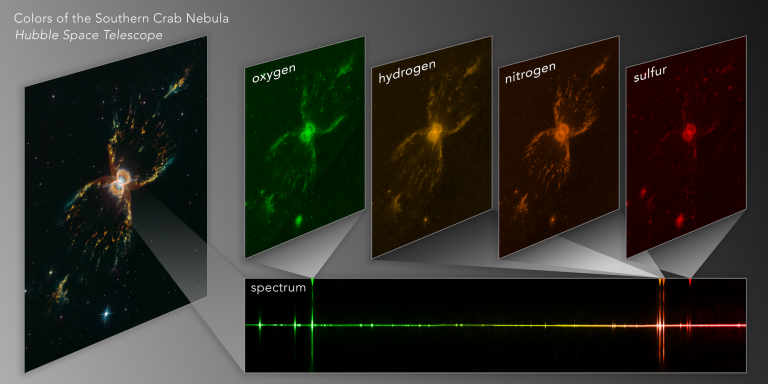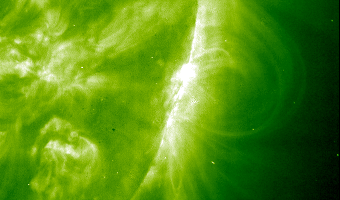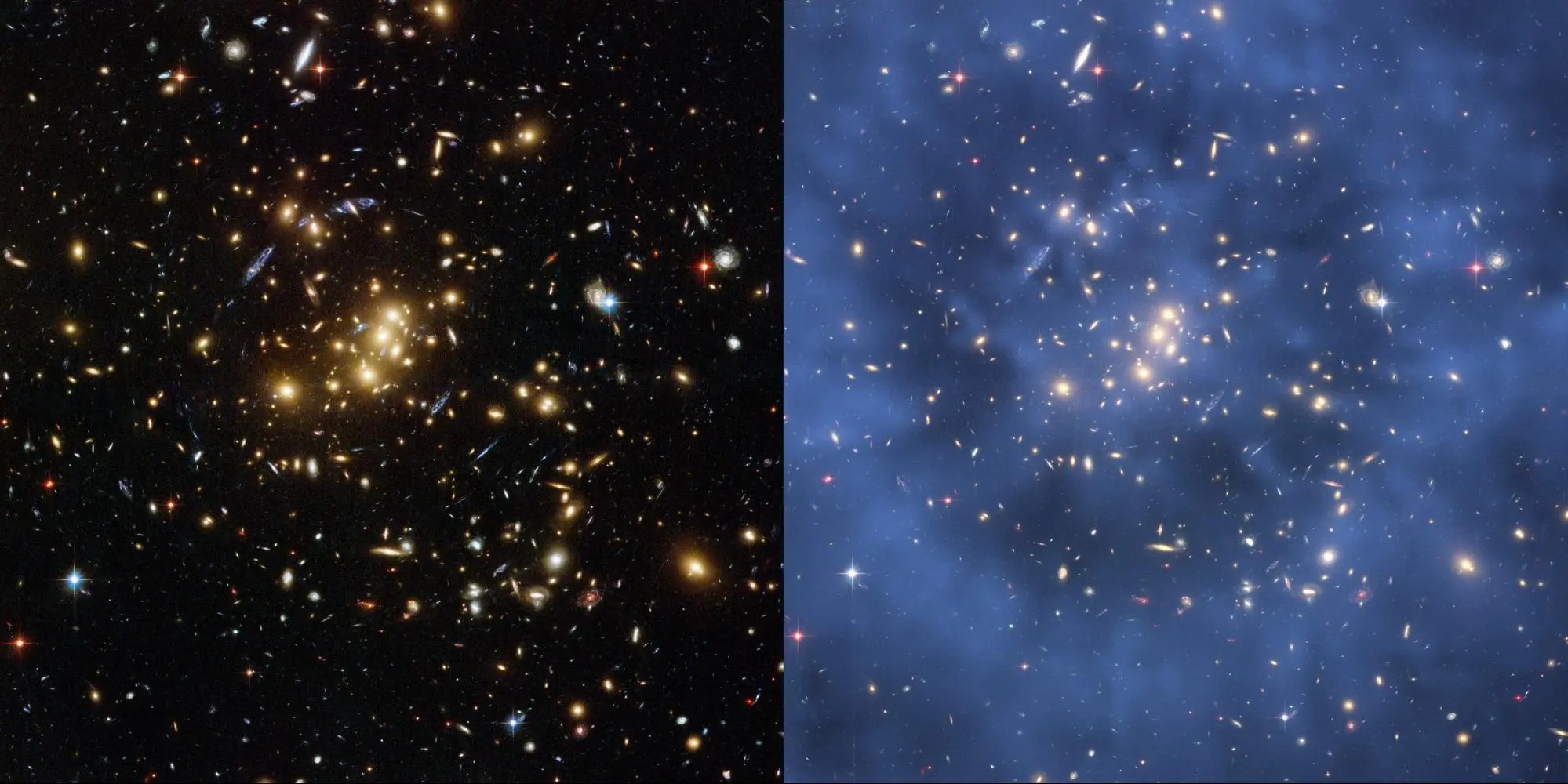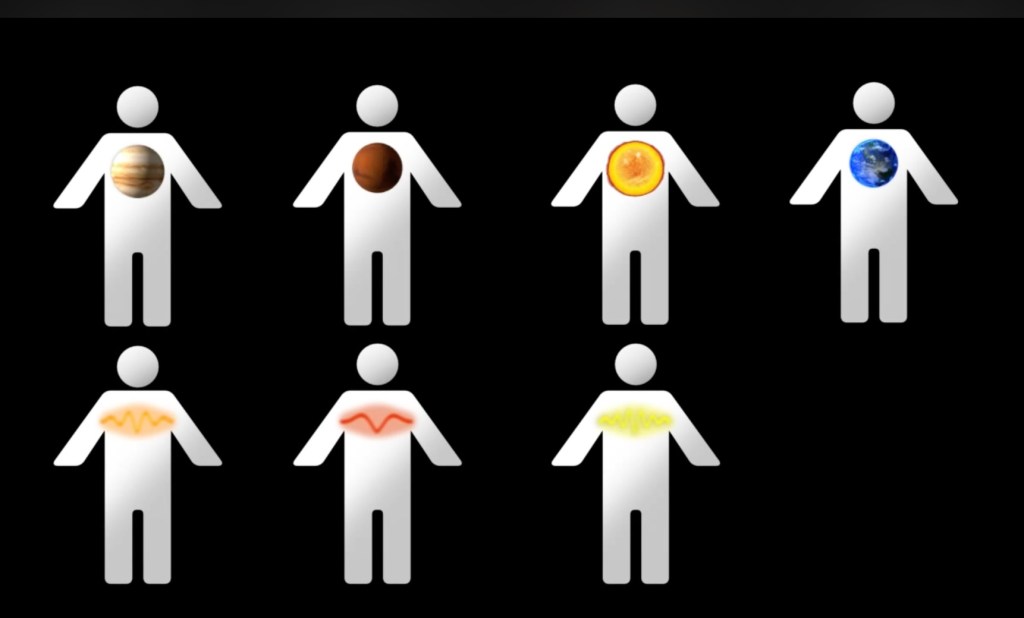Advanced Guiding Question
How does light teach us about distant objects thousands of light years away?
Big Idea 2.3
Educator Background
-
We learn about distant planets, stars, and galaxies by their light, captured by ground-based and space telescopes. Light is produced when atoms are excited, their electrons jump energy levels, and when they fall back to their original ground state, they release photons (particles of light). Depending on the type of element the atom is, the characteristic of that light changes. Each element generates its own unique set of wavelengths of light emission or light absorption. We can use these patterns of emission and absorption, like fingerprints, to allow identification of the presence of an element, even in microscopic quantities, on a distant object. This is called spectroscopy, and it is a critical tool that astronomers use every day.
-
Learning Constraints
At this level, students learn that EM radiation can be represented by a particle model (HS-PS4-3), which helps explain how atoms create photons. Students learn about how light spectra are used to identify compositional elements of stars (HS-ESS1-2,3)(HS-PS1-1).
-
Connect to Heliophysics
Connect to the Sun by emphasizing that scientists use our understanding of the Sun and the solar system to try to find other places in the galaxy where life could exist. They use spectroscopy to look for evidence of the key elements needed for life. For example, scientists can use spectroscopy to identify the composition of the atmosphere of an exoplanet by analyzing the starlight being filtered through the planet's atmosphere.
-
Extend Exploration
Extend student exploration by having them compare the composition and processes of our star, the Sun, to how other stars behave and how those stars affect their planetary systems.
-
Differentiate for Beginner Learners
Support beginner students by examining the spectra of different kinds of elements.
-
Differentiate for More Advanced Learners
Challenge students at the next level to examine data from Parker Solar Probe about the composition of the Sun, and compare that to the data the James Webb Space Telescope has gathered on the atmospheres of nearby exoplanets.

ScienceCasts: Mysterious Objects at the Edge of the Electromagnetic Spectrum
Video Length: 3:28
Search the Resource Database for more videosRecommended Resources
Explore this guiding question with these featured advanced level resources.
Heliophysics Resource Database
Use the guiding question above to explore resources at this level or go directly to our database to search for resources by level, NGSS performance expectation, topic, and mission.
Resource Database




























